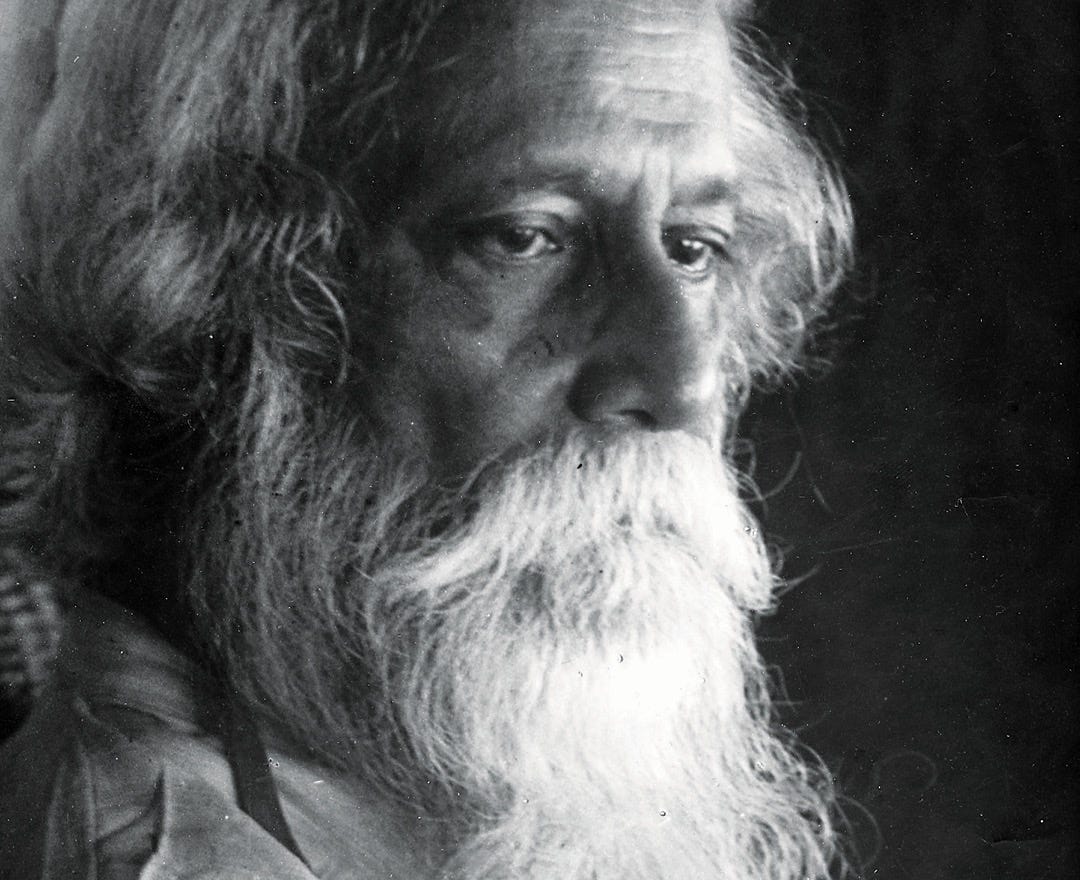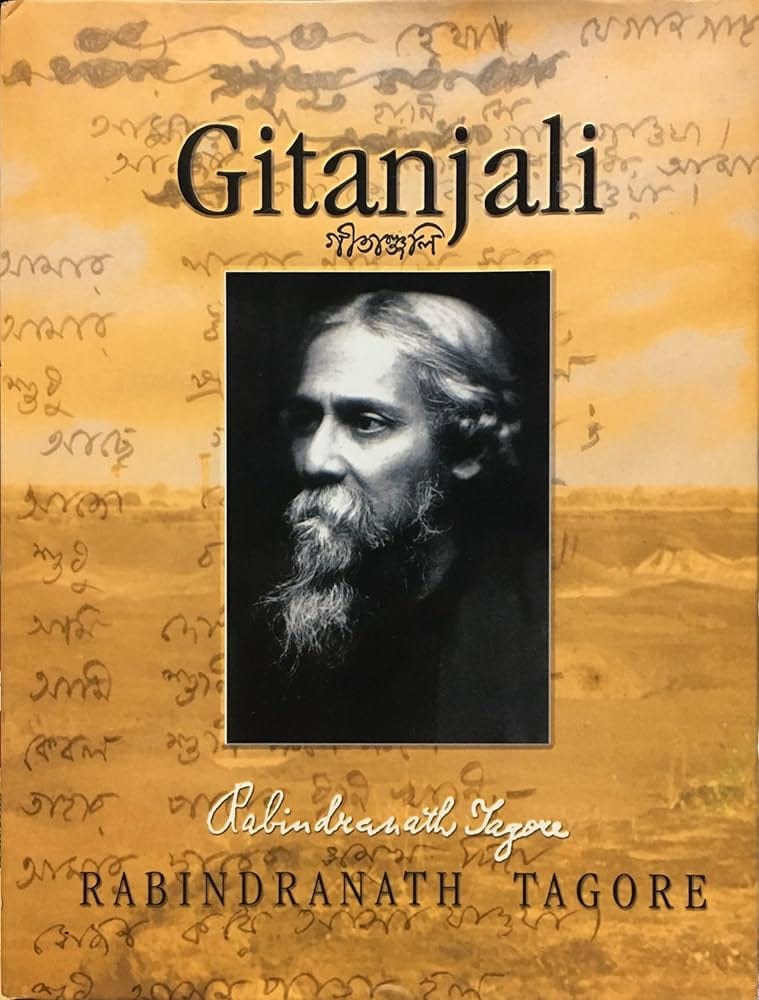Rabindranath Tagore
The poet who gave a soul to a nation
Rabindranath Tagore was much more than a poet — he was a writer, a painter, a philosopher, and the first non-European to win the Nobel Prize in Literature.
Born in 1861 in Calcutta (now Kolkata), India, Tagore grew up in a wealthy and culturally rich family.
He didn’t enjoy the rigid style of formal education, so he mostly studied at home — and that freedom helped shape the creative genius he became. By his teens, he was already writing poetry, plays, and songs.
But what made Tagore truly special was how he blended tradition and modernity. His writing brought together the spiritual depth of Indian philosophy with a fresh, humanist voice that felt universal.
In 1913, he won the Nobel Prize for his book Gitanjali (which means “Song Offerings”), a collection of poems that explore love, devotion, and the connection between the soul and the universe.
The book touched readers across the world, including W.B. Yeats, who helped bring it to the West.
A life full of curiosity

Tagore wasn’t just a writer locked in a room with his thoughts — he was a traveler, a thinker, and a curious soul.
He spent time in England, Japan, the U.S., and other countries, always learning, observing, and connecting with artists and intellectuals.
One fun fact: when he was invited to visit Argentina in 1924, he traveled by ship all the way across the ocean. There, he struck up a unique friendship with Victoria Ocampo, a writer and publisher who hosted him in her home.
The two exchanged letters for years, and she even helped publish his work in Spanish.
A new way to think about education
Tagore believed that education should be more than memorizing facts — it should connect people with nature, creativity, and themselves. That’s why he founded Santiniketan, a school in rural India where classes were held under trees and learning involved music, art, storytelling, and freedom.
He didn’t just teach kids how to read and write. He helped them see the world.
Friend of Gandhi, citizen of the world
Although Tagore and Mahatma Gandhi didn’t always agree on everything, they respected each other deeply.
Tagore actually gave Gandhi the nickname “Mahatma”, which means “Great Soul.”
Tagore believed in a free India — but also in a world where people from all nations could learn from each other. He didn’t want nationalism to block human connection. That made him a visionary not just for his country, but for humanity.
Why he still matters today
Tagore’s words are timeless.
They speak to love, freedom, identity, beauty, and the search for meaning in life. He wrote in Bengali, but his ideas crossed borders with ease.
He left behind over 2,000 songs, dozens of plays, short stories, novels, and even paintings — many of them created late in life. He also wrote the national anthems of India and Bangladesh.
Tagore and Amartya Sen: A legacy of free thinking
One of the many people inspired by Tagore’s ideas was Amartya Sen, the Nobel Prize-winning economist and philosopher.
Sen actually grew up in Santiniketan, the school founded by Tagore, and he often spoke about how that experience shaped the way he thinks.
Tagore’s belief in freedom of thought, respect for other cultures, and education as a path to self-understanding deeply influenced Sen’s later work — especially his ideas about development, justice, and human rights.
Sen once wrote that Tagore’s open-mindedness, combined with his focus on individuality and empathy, gave him “the first lessons in the importance of reasoned choice.”
So, even decades after his death, Tagore's spirit continues to live on — not just in poems and songs, but in the minds of people changing the world.
If you want to start reading Tagore…
Try Gitanjali, the book that won him the Nobel. It’s poetic, spiritual, and surprisingly accessible. You don’t need to understand Indian philosophy to feel something—it just speaks to the heart.







